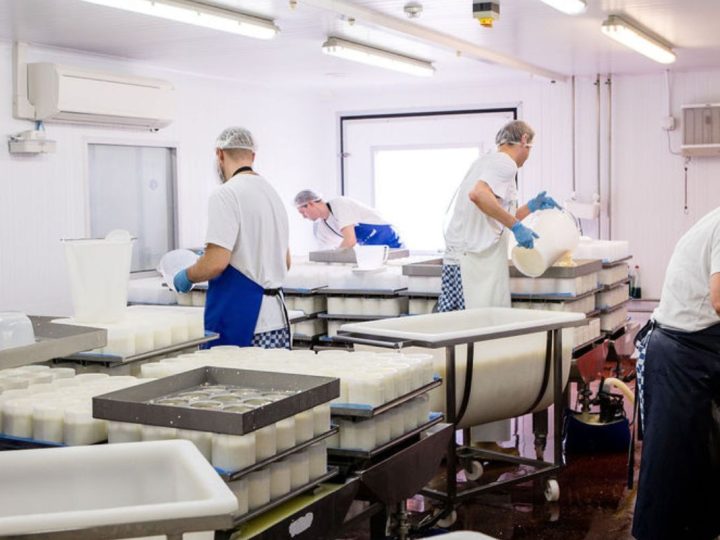We often get asked how our cheeses are made. While there are a few trade secrets we can’t give away, we thought we’d share a few simple facts about the cheese making process.
What must be said upfront is that it’s a phenomenal effort from an amazingly skilled team. People who have watched the process often describe it as a beautifully choreographed dance, where the team each know their role and deliver with apparent effortless ease. Every day we produce 1600 new cheeses from 3000 litres of milk. Having been involved in the process, I can tell you it’s hard work – physically and mentally demanding and requires a lot of concentration.
At Hampshire Cheese Company we are fortunate to employ a highly skilled team who work exceptionally well together. From the milk arriving early in the morning, the following steps are taken:
- Preparing the milk: before it is turned into cheese, the milk is gently pasteurised.
- Acidifying the milk: adding cultures to the milk allows it to begin to ferment and makes it more acidic.
- We coagulate the milk with rennet, which changes the milk from a liquid to a semi-solid state.
- Cutting the curd: After resting, the curd is cut with knives to create the squares of curd that will form the cheese. This allows the whey to separate from the curd.
- Next, the whey is drained.
- Processing the curd: processing the curd through stirring to acidify and placing the curds into cheese moulds.
- Salting the cheese: the next day the cheeses are salted.
- Ageing the cheese: the cheeses are then aged for 4 weeks until they are ready to be sold.
Ultimately, the secret ingredients that distinguish one cheese from another are the combination of the milk, starter cultures and the rennet – often, it takes years to perfect the right formula for your particular cheese. While many large factories can produce huge volumes of cheese in a day, our process at Hampshire Cheese Company delivers exceptional quality due to the care and input of our artisan team.



